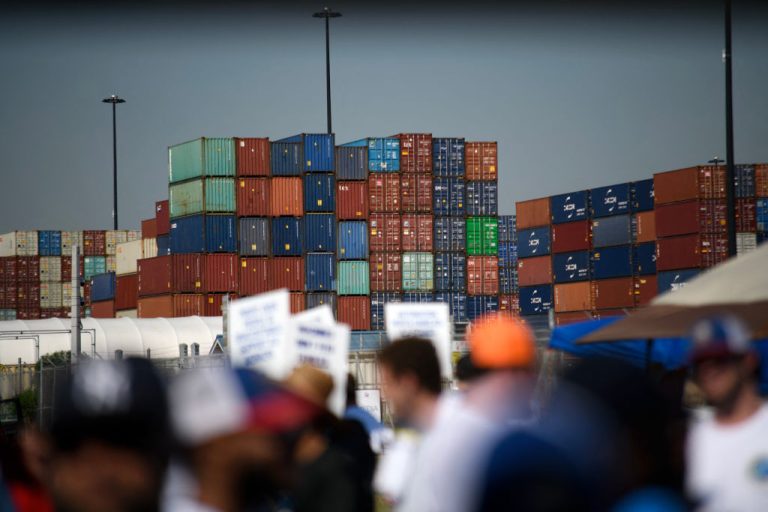NEW YORK, New York — As of Oct. 1, the East and Gulf coasts of the U.S. have been grappling with the most significant port strike in nearly 50 years. The strikes have disrupted trade at 36 key ports, including those in New York, New Jersey, Virginia, and Texas.
Nearly 50,000 dockworkers — represented by the International Longshoremen’s Association (ILA) — have walked off the job to demand better wages and job security in response to automation concerns. With major ports grinding to a halt, this strike is set to have serious repercussions for the U.S. economy, supply chains, and consumers. Here are 5 key points to keep in mind:
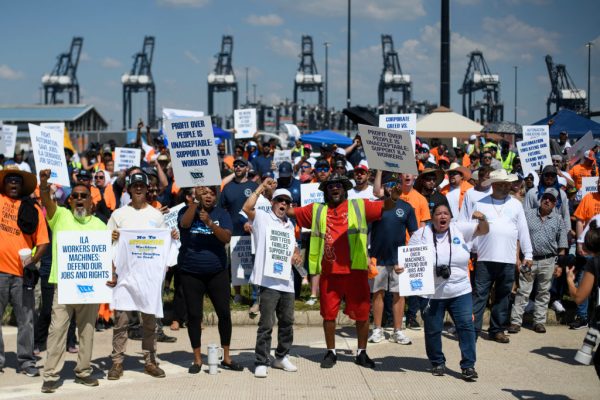
1. Why are dockworkers striking?
The heart of the strike lies in the breakdown of negotiations between the ILA and the United States Maritime Alliance (USMX), which represents the port operators. The ILA rejected USMX’s final offer, which included a wage increase, arguing that it fell short of their demands. As a result, the union is now pushing for a $5 hourly wage increase across a six-year contract and stronger protections against job loss due to automation.
They also want all container royalties — fees paid by shippers for the use of port facilities — to be distributed to the workers.
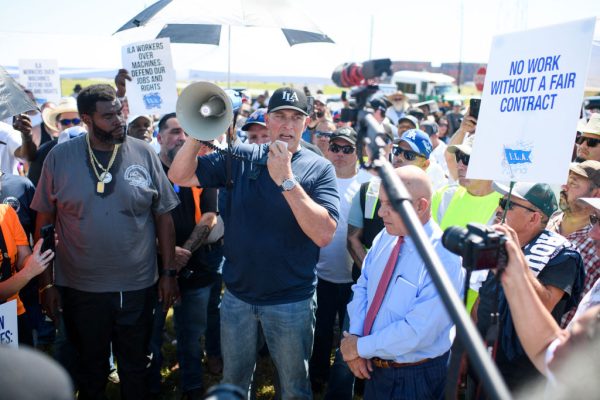
“We put our lives on the line during the pandemic to keep the ports open, and now it’s time for a fair contract,” said ILA President Harold Daggett as he emphasized the union’s stance and how his workers won’t back down until all demands are met.
Success
You are now signed up for our newsletter
Success
Check your email to complete sign up
RELATED: US Steel CEO Warns of Job Cuts, Plant Closures Should Nippon Acquisition Fail
2. Economic impact, supply chain disruptions
But the strike couldn’t come at a worse time for the U.S. economy. According to economists and experts, the disruption could cost the U.S. as much as $3.7 billion per day in lost trade. Major retailers and manufacturers are already bracing for the fallout, which could lead to higher prices and stock shortages, especially as the holiday season approaches.
Electronics, automobiles, and perishable goods like fruits and vegetables are expected to be hit the hardest. Ports along the East Coast handle a significant portion of U.S. imports, including 75 percent of the nation’s banana supply. If the strike continues for more than a week, shortages will likely drive up prices, adding to already tense inflationary pressures at a time when the economy is still recovering from previous supply chain disruptions.

RELATED: US to Ban Chinese, Russian Tech in Smart Vehicles, Citing National Security Concerns
The National Association of Manufacturers (NAM) estimates that $2.1 billion in trade is at risk each day the ports remain closed. Manufacturers are calling for federal intervention, fearing that even a short strike could have long-term consequences for industries reliant on imported goods.
“There will be dire economic consequences on the manufacturing supply chain if a strike occurs for even a brief period,” NAM said in a press release, adding, “Estimates show a strike at the East and Gulf Coast ports would jeopardize $2.1 billion in trade daily, and the total economic damage could reduce GDP by as much as $5 billion per day.”
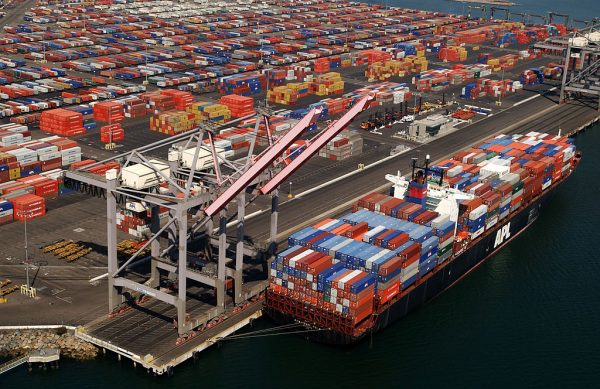
It added, “Manufacturers call on President Biden to intervene by invoking the Taft-Hartley Act, which will force ports to resume operations while negotiations continue.” The Act, formally known as the Labor Management Relations Act of 1947, gives the president the authority to intervene in strikes that pose a national emergency by imposing an 80-day “cooling-off” period, during which workers must return to their jobs while negotiations continue.
3. Government response
While the economic impact is clear, the political ramifications are equally significant. The White House, under President Biden, has expressed solidarity with the striking workers. However, Biden has refrained from invoking the Taft-Hartley Act, citing concerns about disrupting workers’ right to strike and the importance of fair negotiations.
Instead, the administration has stated that workers who kept ports open during the pandemic deserve meaningful wage increases and job security. Biden emphasized that he supports the ongoing negotiations and urged the USMX to present a fair offer to the dockworkers.
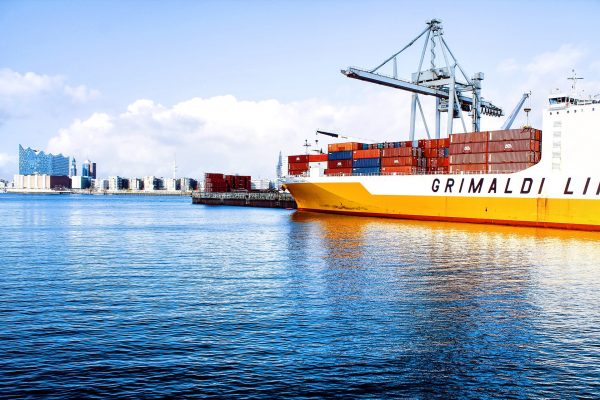
By avoiding the invocation of Taft-Hartley, the administration signals its desire to let the collective bargaining process unfold without government intervention, while also acknowledging the economic risks posed by a prolonged strike
However, the business community is urging Washington to act quickly. The U.S. Chamber of Commerce and other industry groups are concerned about the ripple effects of prolonged disruption, particularly given the already strained global supply chains. Some fear that without intervention, the strike could lead to worse inflation, which would complicate the Federal Reserve’s efforts to manage interest rates.
4. What comes next?
While retailers and manufacturers have taken steps to mitigate the immediate effects of the strike — by stockpiling goods and rerouting shipments to West Coast ports — experts warn that the strike’s impact will only grow if it continues. Some retailers, like Costco and Target, have already begun diverting shipments to other ports, but capacity is limited, and the costs of rerouting are high.
Moreover, the longer the strike drags on, the harder it will be to recover. It’s estimated that even if the strike lasts only one week, it could take several months for the ports to return to normal operations. With each passing day, the backlog of shipments grows, affecting everything from consumer goods and agriculture to industrial supplies and prescription drugs.

As the strike continues, consumers have started to panic. Fearing potential shortages, some have begun hoarding essential goods, including food, household supplies, and prescription medications. This preemptive stockpiling has caused shelves in certain stores to empty more quickly than usual, further fueling anxiety.
Retailers are already struggling to manage inventory levels, with some warning that a prolonged strike could lead to widespread shortages and price hikes. Meanwhile, experts are cautioning consumers against panic buying, but the uncertainty surrounding the strike’s duration has many on edge as they remember the supply chain disruptions fueled by the pandemic.
5. A looming crisis
The East Coast port strike has quickly escalated into a major economic and political crisis. With nearly half of the nation’s ocean trade at a standstill, the potential for widespread disruption is massive. If a resolution isn’t reached soon, consumers and businesses alike will feel the pinch of rising prices and product shortages, experts note.
For now, the ILA remains resolute in its demands — and unless USMX meets those demands — the strike is poised to continue. The stakes are high, and the clock is ticking on what could become one of the most significant labor disputes in recent U.S. history.



